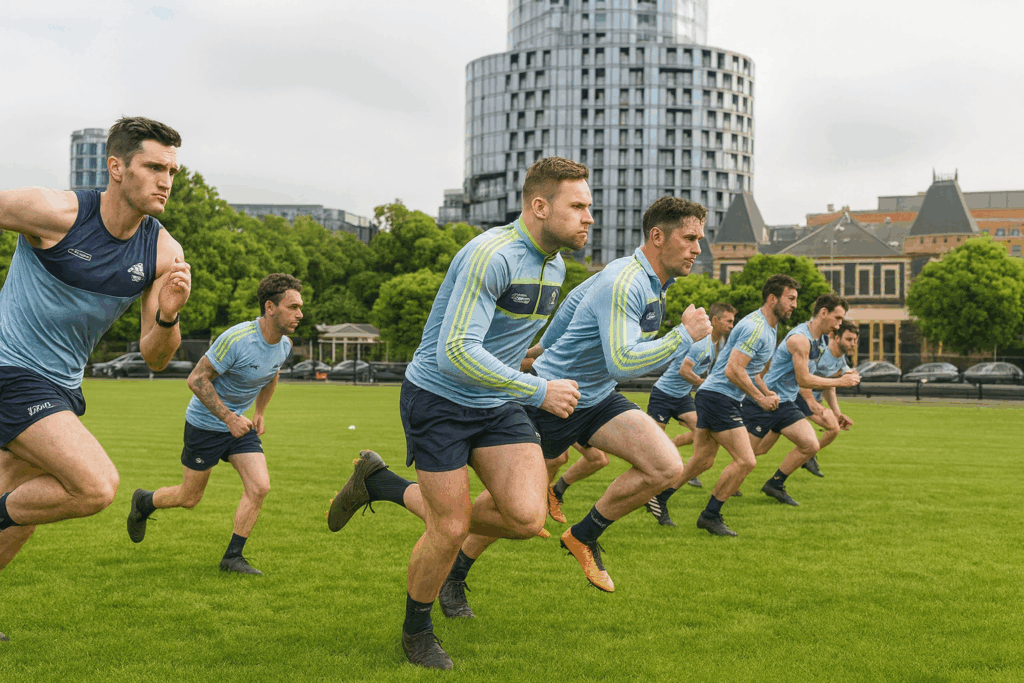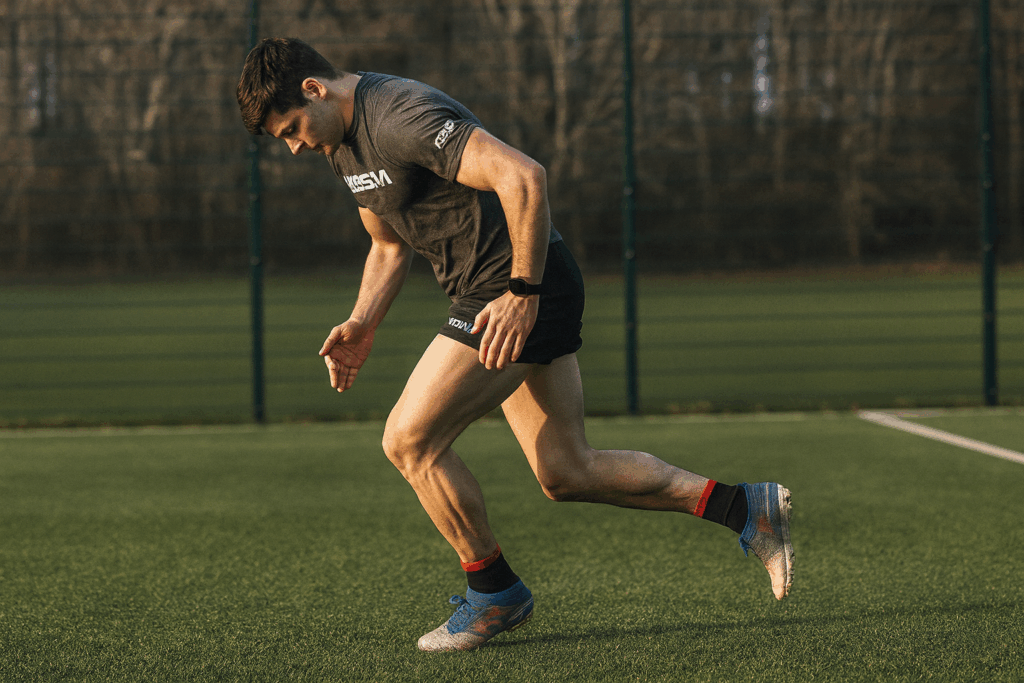Introduction
In soccer, technical skills and tactical awareness are essential for success, but physical capabilities, particularly sprinting and agility, play an equally vital role. Over the past decade, research has increasingly focused on the anaerobic demands of soccer, revealing that speed and agility are becoming even more critical in modern gameplay. This blog explores the latest findings on sprinting and agility in soccer and their implications for player performance.
Sprint Demands in Soccer
Distance Covered During Games
On average, male and female soccer players cover between 9–12 km per game, with sprinting accounting for 8–12% of the total distance. Wide players, such as midfielders and defenders, tend to perform the most high-intensity running and sprints.
- Key Stats:
- Players perform 17–81 sprints per game, with peak speeds reaching 31–32 km/h.
- Most sprints are under 20m and last 2–4 seconds on average.
- Players execute approximately eight accelerations for every sprint.
Sprinting and Goal Scoring
A study found that 45% of goals are preceded by a straight sprint, often without an opposing challenge or ball interaction. This underscores the importance of sprinting speed and positioning in decisive moments.
Sprint Characteristics in Soccer
Straight-Line Sprinting Speed
Straight-line sprinting in soccer involves three key phases: acceleration, maximal velocity, and deceleration.
- Importance of Acceleration:
Over 90% of all sprints in soccer matches are shorter than 20m. Faster acceleration increases a player’s chances of bypassing defenders or intercepting the ball. - Comparing Soccer Players to Sprinters:
While soccer players are slower than elite sprinters, recent studies indicate that the fastest male soccer players can rival 60m sprint finalists in national athletic championships. - Positional Differences in Sprint Speed:
- Forwards are typically the fastest players due to their frequent involvement in attacking duels.
- Defenders also show high sprinting capabilities to counter fast-paced attacks.
Agility in Soccer
Definition of Agility
Agility is the ability to execute rapid, whole-body movements with changes in velocity or direction in response to a stimulus. It has two components:
- Physical: The strength, speed, and mechanics required to change direction.
- Cognitive: The decision-making and reaction skills needed to adapt to gameplay scenarios.
Key Insights on Agility Performance:
- Independence from Strength and Power:
Research shows a weak relationship between strength/power and agility performance. Straight sprinting, agility, and jumping are distinct locomotor skills requiring specific training. - Technique Matters:
Proper change-of-direction techniques, such as lowering the centre of mass and leaning the body in the desired direction, are crucial. This not only enhances agility but also reduces the risk of injury.
Cristiano Ronaldo vs. a 100m Sprinter:
A famous comparison between Cristiano Ronaldo and Spanish 100m champion Angel David Rodriguez highlights the importance of agility in soccer. While Ronaldo was slower in a straight-line sprint, he outperformed Rodriguez on a zigzag course, emphasizing the unique demands of soccer-specific agility.
Training Recommendations for Sprinting and Agility
- Sprint Training:
- Focus on short-distance sprints (10–20m) to improve acceleration.
- Incorporate resisted sprints with sleds or bands to enhance power output.
- Train for peak velocity with longer sprints (30–40m) for occasional use in games.
- Agility Drills:
- Use cone drills or reactive agility drills to simulate real-game scenarios.
- Practice changing direction with proper technique to minimize injury risk.
- Include cognitive elements, such as reacting to a coach’s command or visual stimuli, to mimic in-game decision-making.
- Strength Training:
- Focus on lower-body strength to support explosive movements.
- Incorporate plyometrics, such as lateral bounds and depth jumps, to improve power and coordination.
- Recovery:
- Prioritize active recovery and mobility exercises to maintain performance over a demanding season.
Conclusion
Sprinting and agility are crucial components of modern soccer, influencing both offensive and defensive performance. With players covering extensive distances and executing numerous sprints and accelerations per game, training for speed and agility has never been more important.
By focusing on acceleration, incorporating agility drills, and optimizing technique, players can gain a competitive edge on the field. As research continues to highlight the evolving physical demands of soccer, players who prioritize these areas will be better equipped to meet the challenges of the modern game.




